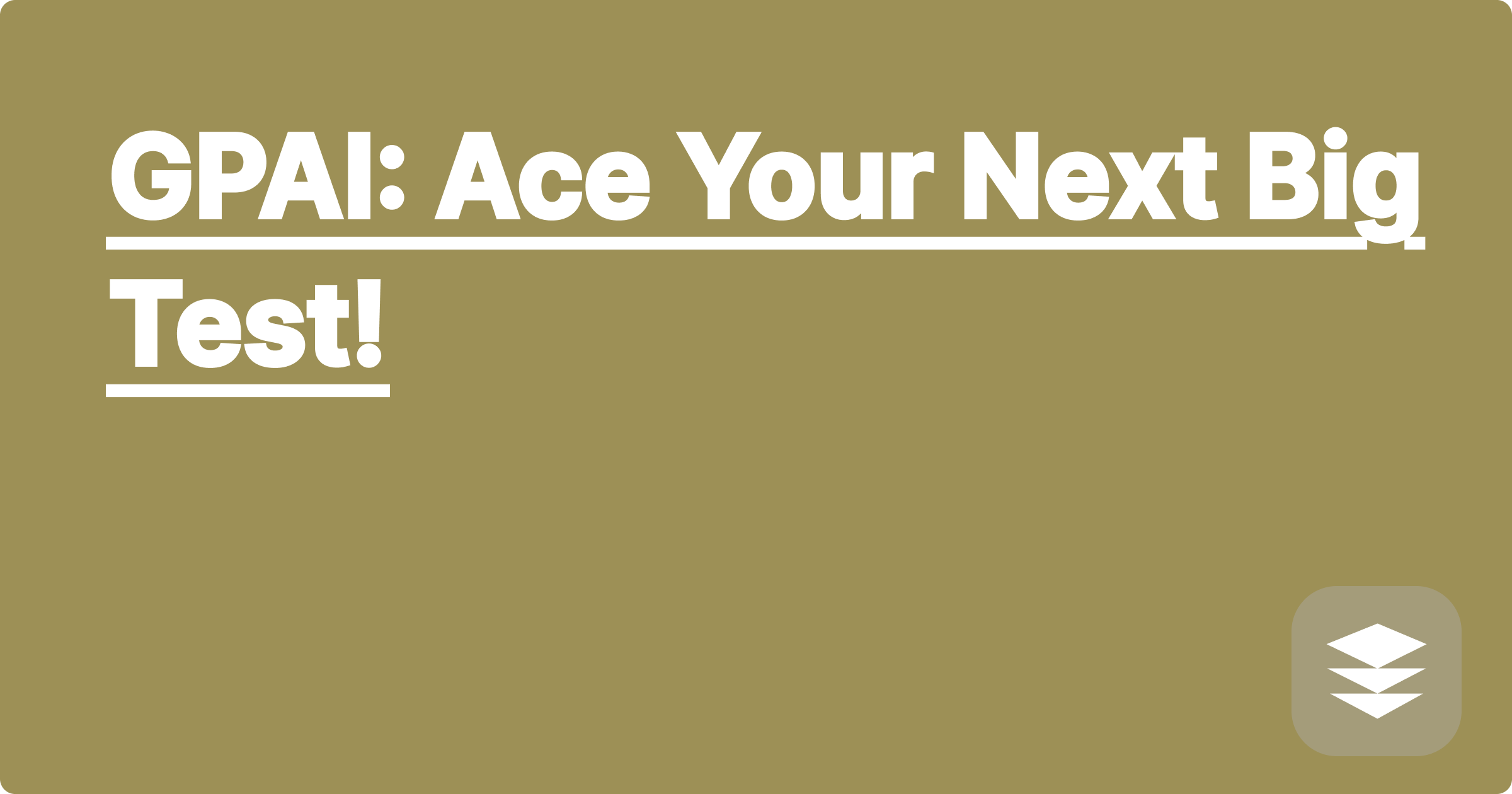
The demanding world of STEM education and research presents a constant stream of challenging tests, from quizzes and midterms to comprehensive final exams and qualifying examinations. These assessments often require not just rote memorization but a deep understanding of complex concepts, the ability to apply them to novel problems, and effective time management. Fortunately, the rapidly evolving field of Generative Pre-trained Transformer (GPT) based AI offers powerful new tools to help STEM students and researchers not just survive but thrive in this demanding environment. Mastering these AI tools can be the key to unlocking your full academic potential and achieving greater success in your STEM journey.
This matters significantly for STEM students and researchers because the traditional study methods often fall short in addressing the multifaceted demands of these fields. Simply rereading textbooks and notes can be passive and inefficient, failing to solidify understanding or foster the critical thinking skills necessary for tackling complex problems. AI tools offer a more dynamic and interactive learning experience, providing personalized feedback, generating practice problems, and explaining intricate concepts in clear, accessible language. By integrating these tools into your study routine, you can transform your approach to learning and gain a significant edge in your academic pursuits.
STEM fields, encompassing science, technology, engineering, and mathematics, are characterized by rigorous curricula and demanding assessments. These assessments often involve a combination of theoretical understanding and practical application, requiring students to not only memorize formulas and definitions but also to analyze data, solve complex problems, and design experiments. Furthermore, the sheer volume of information covered in STEM courses can be overwhelming, making it challenging for students to effectively manage their time and prioritize their studies. The pressure to perform well in these assessments can lead to stress and anxiety, which further hinders learning and academic performance. This creates a need for more effective and efficient study methods that go beyond traditional approaches.
Generative AI tools like ChatGPT, Claude, and Wolfram Alpha offer a transformative approach to STEM education and research. These tools can be leveraged in a variety of ways to enhance understanding, improve problem-solving skills, and optimize study time. ChatGPT and Claude, for instance, can be used to explain complex concepts in simpler terms, generate practice questions and quizzes, and provide personalized feedback on written assignments. Wolfram Alpha excels at computational tasks, enabling students to quickly solve equations, visualize data, and explore mathematical concepts. By strategically integrating these tools into your study routine, you can create a more dynamic and personalized learning experience.
Begin by identifying the specific areas where you need the most support. Are you struggling with a particular concept, or do you need help practicing problem-solving? Once you've identified your needs, you can select the most appropriate AI tool. For conceptual understanding, ChatGPT or Claude can provide clear explanations and answer your questions in a conversational manner. If you need to solve equations or perform complex calculations, Wolfram Alpha is an excellent choice. Next, formulate your queries or prompts clearly and concisely to get the most accurate and relevant results. For example, instead of asking "Explain calculus," you could ask "Explain the concept of derivatives in calculus with real-world examples." Finally, critically evaluate the information provided by the AI. Remember that these tools are not infallible, and it's important to cross-check information and verify results with other sources.
Consider a student struggling with the concept of eigenvalues and eigenvectors in linear algebra. They could use Wolfram Alpha to compute the eigenvalues and eigenvectors of a given matrix, visualize the transformation, and explore the properties of these concepts. Alternatively, they could ask ChatGPT to explain the geometric interpretation of eigenvalues and eigenvectors, providing real-world examples of their applications in fields like engineering and physics. For example, they could ask, "Explain how eigenvalues and eigenvectors are used in structural engineering to analyze the stability of buildings." Another example involves using ChatGPT to generate practice problems for a specific topic, such as organic chemistry reactions. The student can then work through these problems and use ChatGPT to check their answers and provide feedback on their approach.
To effectively utilize AI in your STEM studies, develop a structured study plan that integrates these tools strategically. Don't rely solely on AI; instead, use it to supplement your traditional learning methods. Actively engage with the material by asking questions, formulating your own examples, and testing your understanding. Experiment with different AI tools and find the ones that best suit your learning style and needs. Remember that AI is a tool, and its effectiveness depends on how you use it. By combining the power of AI with your own effort and dedication, you can achieve significant academic success.
Embrace these powerful AI tools as valuable allies in your STEM journey. Start by exploring the different platforms mentioned, experimenting with their functionalities, and identifying how they can best support your specific learning needs. Develop a structured approach to integrating these tools into your study routine, and remember to actively engage with the material and critically evaluate the information provided. By combining the power of AI with your own hard work and dedication, you can unlock your full potential and achieve greater success in the demanding world of STEM.
GPAI: Master Your Coding Projects
Exam Success: GPAI's Smart Prep
GPAI: Homework? Done in Minutes!
GPAI: Streamline Your Research
GPAI: Your Problem-Solving Partner
GPAI: Effective Note-Taking Made Easy